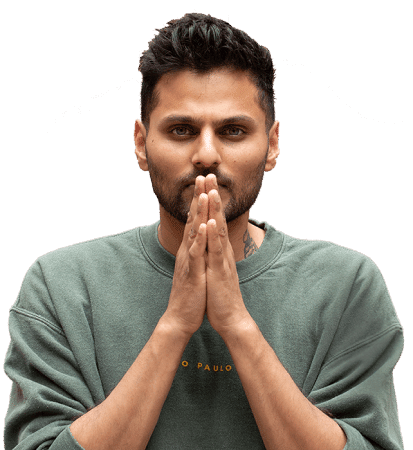Finding his purpose didn’t end up looking like Jay Shetty thought it would. An encounter with a monk led him on a journey away from the “good life” and into a life of decidedly less luxury. Instead of a high-powered corporate career, working towards higher pay and a fancy lifestyle, Jay Shetty became a monk.
“From the outside, being a monk looks like it’s fundamentally about letting go: the baldness, the robes, stripping away distractions,” Shetty writes. “Letting go opened our minds.”
In Chapter 5 of his new book, Think Like a Monk, Jay Shetty explains that monks spend their days in service helping out wherever and however they are needed. Each day during his time as a monk, the monks rotated between different chores and responsibilities to show their willingness to help rather than gravitating towards the tasks and responsibilities they preferred to do over ones they didn’t particularly like.
Despite the equal share in responsibilities the monks practiced, this didn’t take away from their individual talents and abilities. One person might have been drawn to cooking, while another may have been drawn to tending the animals or gardening.
“We could experiment with new skills, study them, see how improving them made us feel,” Jay Shetty writes. “Exploring our strengths and weaknesses in the self-contained universe of the ashram helped lead each of us to our dharma. Everyone has a psychophysical nature which determines where they flourish and thrive.”
Dharma, he says, represents a person’s calling. He explains that dharma is using your natural inclinations – what you thrive at – to serve others. “You should feel passion when the process is pleasing and your execution is skillful”
Growing up, many of us hear two main lies.
“You’ll never amount to anything” and “You can be anything you want to be.”
Society has taught us we need to start achieving early on in our lives through test scores, getting into the “right” colleges, and having professional success before the ink is even dried on the diploma.
Society, Jay Shetty argues, is wrong. That kind of pressure to achieve is impossible and only creates more anxiety and stress. The pressure to achieve early and keep achieving keeps many of us from truly understanding ourselves and what we are here to do. When we are pushed into doing something either by our parents, peers, or societal pressure, we miss out on who we truly are and what our purpose is.
In addition, we are taught to always strengthen our weaknesses. All the typical benchmarks – grades, test scores, performance reviews, even our own self-improvement – highlight our weaknesses and push us to improve them.
What would shift in our lives if we stopped thinking about our weaknesses as negatives, and instead simply viewed them as someone else’s dharma? Perhaps we aren’t meant to do those things, but instead operate within our natural talents and abilities.
Want to read more about how to use the four quadrants to discover your dharma? To finish Chapter 5, order your copy of Think Like a Monk today.
